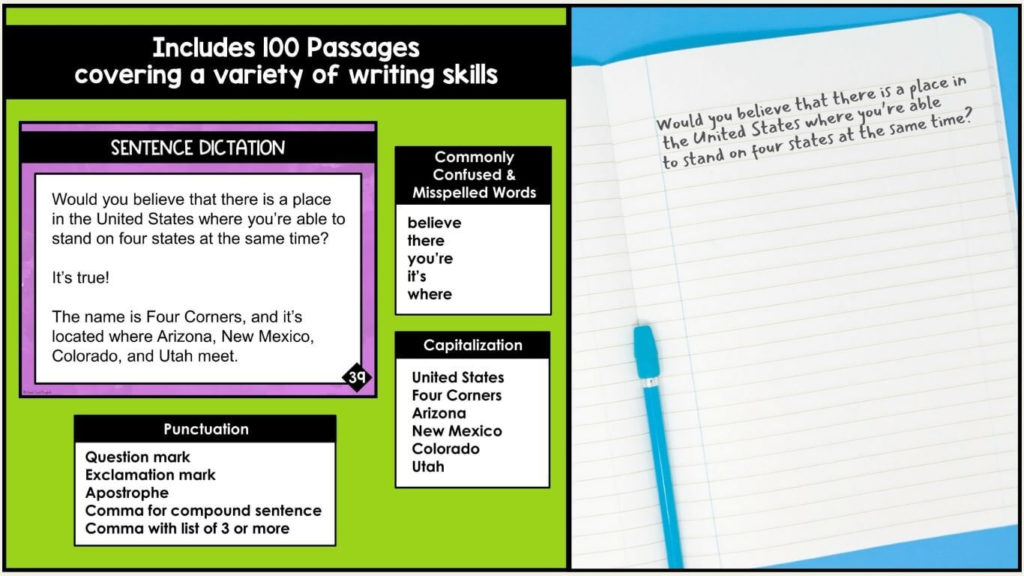Transform Student Writing With Sentence Dictation

Teaching sure can bring some moments that make us stop and think, can’t it? Lately, I’ve been noticing something that’s really got me wondering what’s going on. Our students seem to be having a tougher time than ever with basic skills like spelling, capitalization, punctuation, and sentence structure.
Now, we could point fingers at technology, long-lasting effects of classroom disruptions from Covid, or other factors, but the truth is, mastering these basics is as important as it’s ever been. That’s why I’m always on the lookout for ways to weave spelling and mechanics practice into our daily routine.
One of my all-time favorite methods? It’s a simple warm-up that gets them thinking about how to craft a sentence just right – a good ol’ sentence dictation activity.
Yeah, that’s right; I said it: a dictation activity.
I know, I know. Dictation might not be the trendiest tool in the teaching toolbox, but let me tell you, it’s a gem with a ton of benefits.
Sentence Dictation to Boost Writing Skills
First off, it’s a fantastic way to model good sentence structure. Students get a firsthand look at how sentences should flow, and it helps reinforce proper grammar in a natural, practical way.
But that’s not all. Dictation allows us to target specific errors, like those pesky slip-ups from misunderstanding a word based on its pronunciation. A good example of this is writing “could of” because of the way “could’ve” sounds. By honing in on these mistakes, we’re giving students the tools they need to recognize and correct them in the future.
For English language learners, this activity is especially useful for understanding sentence structure and discovering when they have misheard words or phrases.
And let’s not forget about spelling. Sentence dictation ties everyday words to their correct spellings, making it easier for students to remember them down the line. I love that this one task can target both spelling practice and sentence structure at the same time.
Plus, dictation is perfect for tackling homophones and commonly confused words. With an activity that is simply choosing a homophone to fill in the blank, students know the drill. It’s pretty easy for them to figure out the correct answer without putting in much thought. But writing from dictation requires students to think critically about the context of the whole sentence. Maybe there’s a homophone in there, but maybe not. Not knowing what to expect makes homophone practice with a dictated sentence a whole different ball game, and it keeps them on their toes.
And finally, sentence dictation is a great way to practice punctuation and capitalization. Whether it’s adding commas to compound and complex sentences or ensuring proper capitalization, students get hands-on experience with the nitty-gritty details of writing.
The importance of spiral review cannot be overstated, and this simple and effective tool gives students the practice they need to make the concepts stick!
Now, how do you actually use dictation in the classroom?
My favorite way to use this activity is as a warm up or bell ringer – a quick sentence dictation activity to kickstart your daily routine and get those mental gears turning. It’s the perfect way to ease into the day while still keeping things educational.
I wanted to have a good collection of dictation activities ready to go, so I created these 100 passages that incorporate a variety of frequently misspelled words, commonly confused words, and punctuation/capitalization rules. Each passage gives students multiple opportunities to practice spelling and mechanics. There are also passages to spark student interest as they listen to fun facts or unofficial monthly holidays.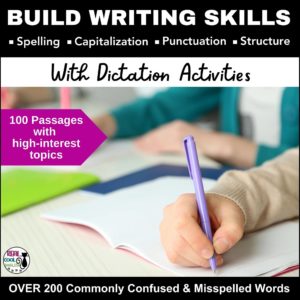
Another idea? Use dictation as a story starter. Give them the first sentence, let them work out any errors, and then watch as their imaginations take off. It’s a great way to blend writing skills with creative thinking. For even more creative writing ideas, see how you can spark creative writing with picture prompts, where you can also grab FREE picture writing prompts!
And if you’re looking for ways to increase student vocabulary, don’t forget about the “word of the day” activity. Incorporate the target word into a sentence, and watch as students practice spelling, structure, and punctuation all at once. It’s like a mini language lesson wrapped up in a neat little package.
So there you have it – the lowdown on sentence dictation. It might not be the flashiest tool in the shed, but when it comes to teaching writing skills, it’s hard to beat. Give it a try and see for yourself how it can transform your students’ writing skills!
How to find the right sentences to use for dictation?
Ideally, sentences should incorporate a variety of frequently confused/misspelled words, a mix of different sentence structures, and punctuation/capitalization rules. But the good news is that I’ve done all the work for you! I’ve created 100 short passages that include a wide variety of all these features, including many homophones and commonly confused words and OVER 200 frequently misspelled words. Make this a part of your teaching routine, and watch your students’ writing skills soar!
Click the image below for a closer look at what’s included!
GET EVEN MORE WRITING PRACTICE WITH THESE RESOURCES:
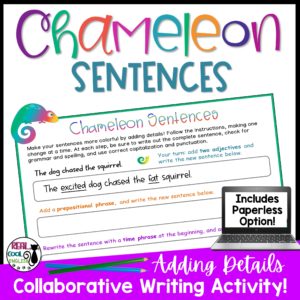 | 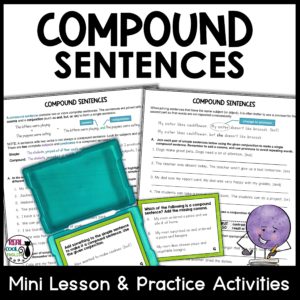 |
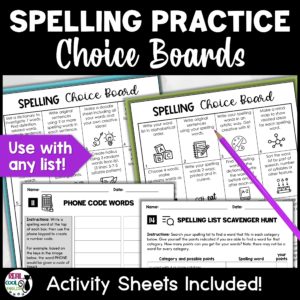 | 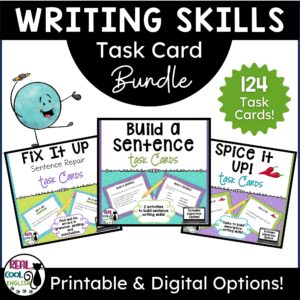 |

